Let’s face it, creating a dream home gym can feel like a financial hurdle.
You crave a stylish and functional space, but traditional gym flooring options often come with hefty price tags.
Interlocking wood tiles offer a unique solution, blending affordability with a touch of luxury for your home gym haven.
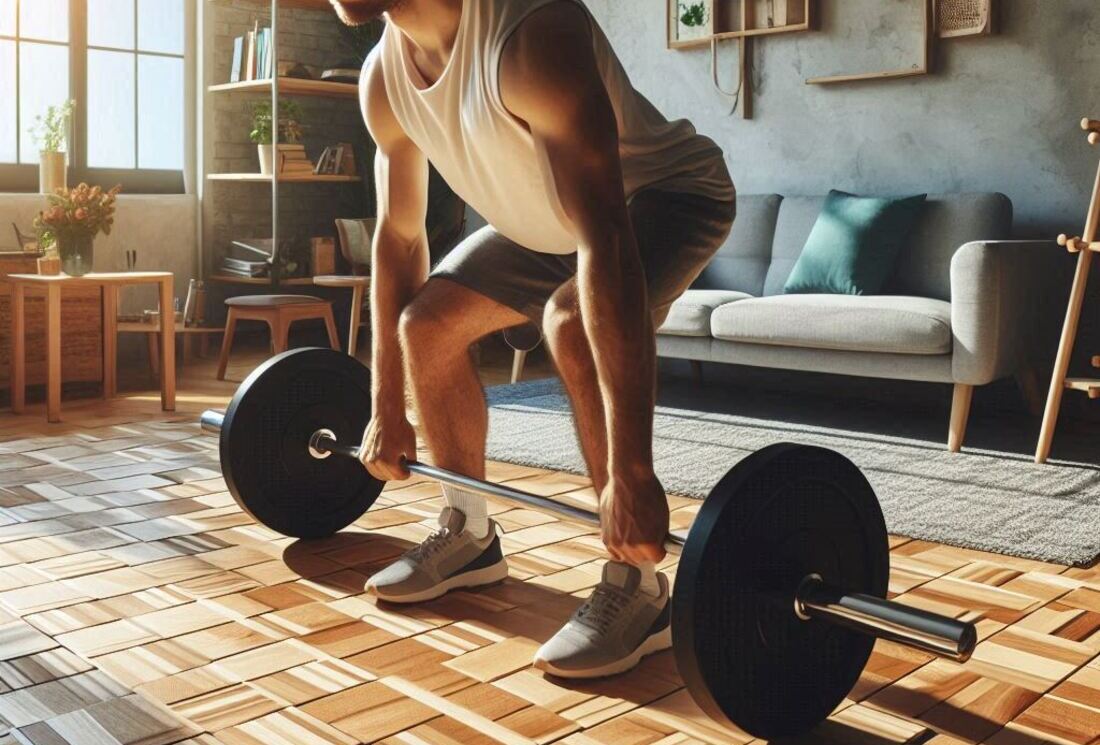
But are interlocking wood tiles all sunshine and aesthetics?
This comprehensive guide delves into the world of interlocking wood tiles for home gyms.
We’ll explore their benefits, drawbacks, different types, and everything you need to know to decide if they’re the perfect fit for your budget and your workout style.
Why Consider Interlocking Wood Tiles for Your Home Gym?
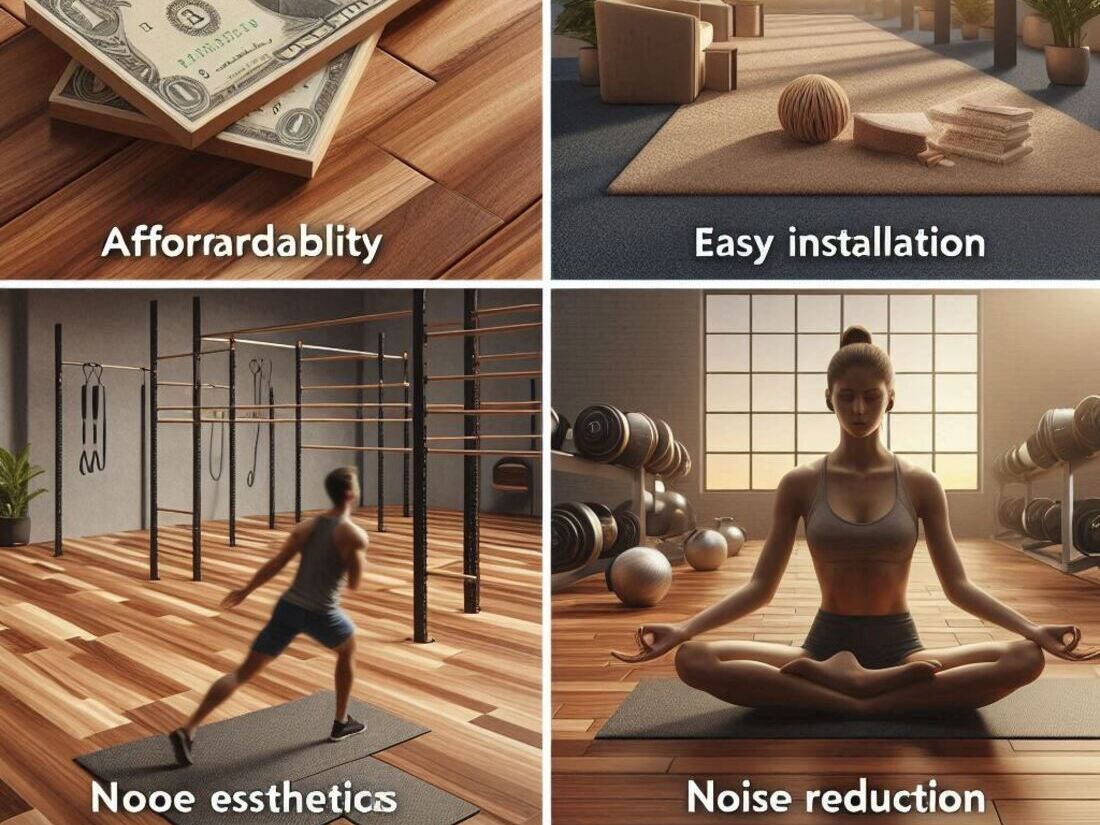
Interlocking wood tiles offer a compelling alternative to traditional gym flooring, especially for those on a budget.
Here are some key benefits to consider:
- Affordability: Compared to rubber flooring or rolled wood, interlocking wood tiles are generally a more cost-effective option. This allows you to create a stylish gym space without breaking the bank.
- Easy Installation: Most interlocking wood tiles feature a user-friendly click-lock system. This allows for DIY installation, saving you on professional installation costs.
- Aesthetics: Wood tiles add a touch of warmth and sophistication to your home gym, creating a more inviting workout environment.
- Versatility: Interlocking wood tiles come in a variety of finishes, colors, and even textures. You can choose a style that complements your overall gym design.
- Noise Reduction: Wood tiles offer some level of noise absorption, minimizing sound transmission from your workouts, especially beneficial for shared living spaces.
Key Takeaways on Interlocking Wood Tile Benefits:
- Budget-friendly option compared to traditional gym flooring.
- Easy DIY installation saves on professional installation costs.
- Warm and stylish aesthetic for a more inviting gym space.
- Versatile with a variety of finishes, colors, and textures.
- Offers some level of noise reduction for a considerate workout experience.
Now that you’re intrigued by the potential of wood tiles, let’s explore the different types available.
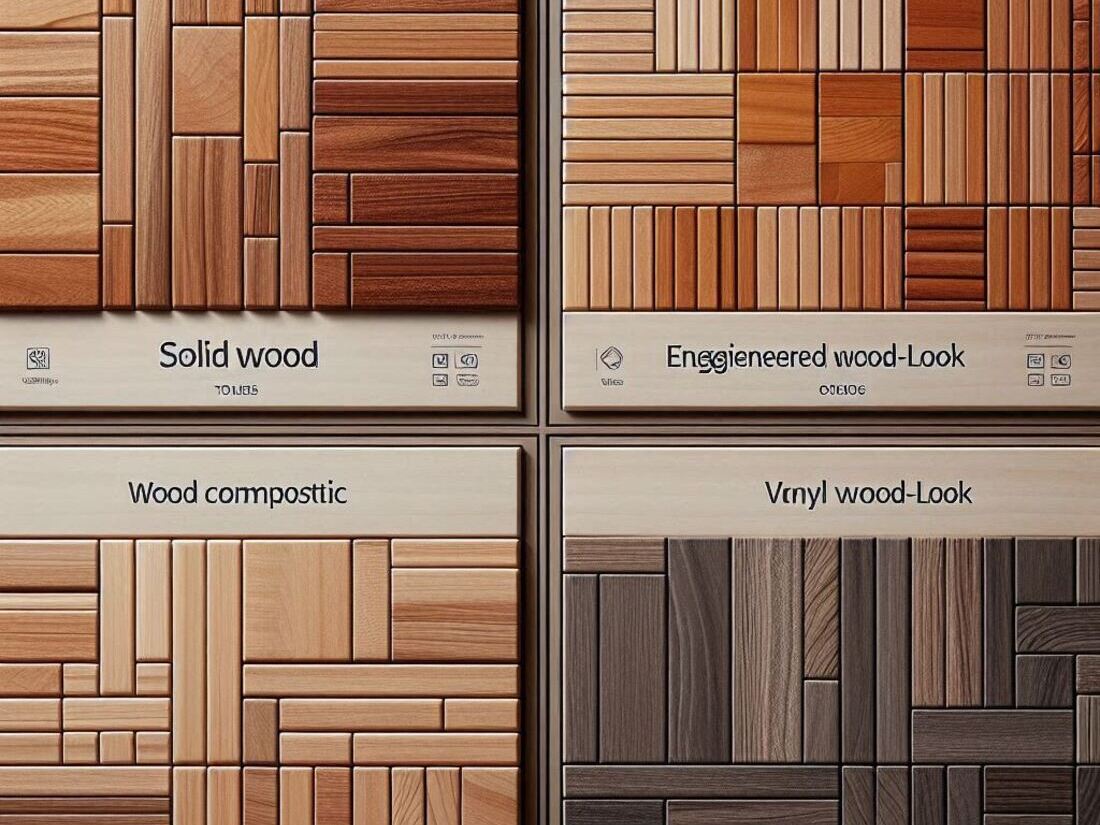
Types of Interlocking Wood Tiles for Home Gyms
Below are affiliate links to wood tiles for further information.
- Solid Wood Tiles: These tiles offer a genuine wood look and feel, creating a luxurious aesthetic for your gym. However, they may be more susceptible to moisture damage and require more maintenance.
- Engineered Wood Tiles: A more affordable alternative to solid wood, engineered wood tiles provide a similar look with enhanced moisture resistance. They are also generally easier to maintain.
- Wood-Composite Tiles: These tiles combine wood fibers with a synthetic binder, offering a durable and water-resistant option. While not “real” wood, they provide a wood-like aesthetic at a lower cost.
- Vinyl Wood-Look Tiles: These interlocking tiles offer the most affordable option, mimicking the look of wood with a vinyl material. They are water-resistant and easy to maintain, but may not provide the same level of visual appeal as real wood options.
Table 1: Comparison of Common Interlocking Wood Tile Types
| Type | Pros | Cons | Ideal Use |
|---|---|---|---|
| Solid Wood Tiles | Luxurious aesthetic, natural feel | More expensive, susceptible to moisture | Low-impact workouts, yoga, stretching |
| Engineered Wood Tiles | Affordable wood look, moisture resistant | Less luxurious aesthetic than solid wood | Low-impact workouts, bodyweight exercises |
| Wood-Composite Tiles | Durable, water resistant, budget-friendly | Not real wood, may lack visual appeal | General gym use (lighter weights) |
| Vinyl Wood-Look Tiles | Most affordable, water resistant, easy maintenance | Least luxurious aesthetic | Low-impact workouts, functional training |
Note: This table is a general guide, and specific products within each type may have varying features.
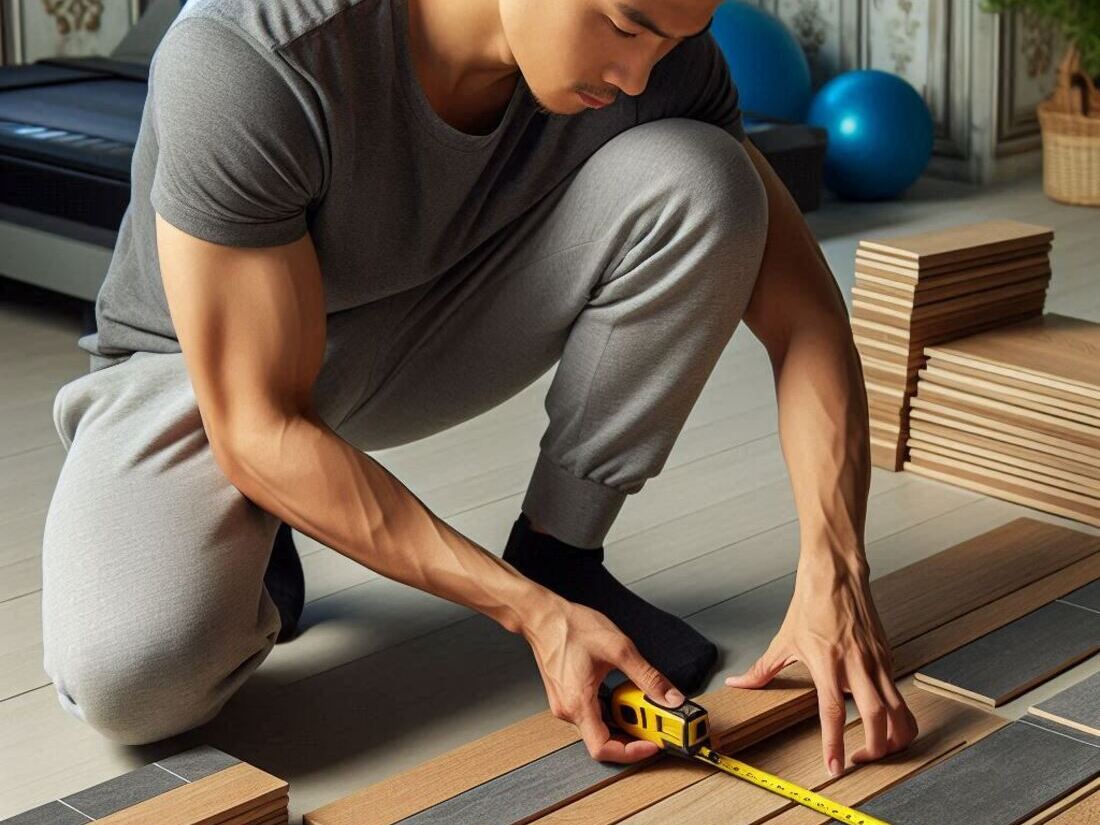
Important Considerations Before Choosing Interlocking Wood Tiles
While interlocking wood tiles offer numerous advantages, here are some factors to consider before making your final decision:
- Durability: Consider the type of workouts you’ll be doing. Solid wood might not be ideal for heavy weights due to potential damage. Opt for more durable options like engineered wood or wood composites for high-impact activities.
- Moisture Resistance: Wood tiles can be susceptible to moisture damage. For sweatier workouts, choose engineered wood, wood-composite tiles, or vinyl wood-look tiles for better moisture resistance.
- Maintenance: Solid wood tiles might require more maintenance like occasional refinishing. Consider your time commitment and choose tiles with a lower maintenance requirement if that’s a priority.
- Comfort: Interlocking wood tiles generally offer a firmer surface compared to rubber flooring. This might not be ideal for exercises that require a lot of kneeling or floor work. Consider using exercise mats for additional cushioning in specific areas.
- Subfloor Compatibility: Ensure your subfloor is flat, clean, and dry before installation. Uneven surfaces can lead to gaps or unevenness in the finished floor. Some interlocking wood tiles might require additional underlayment for optimal performance.
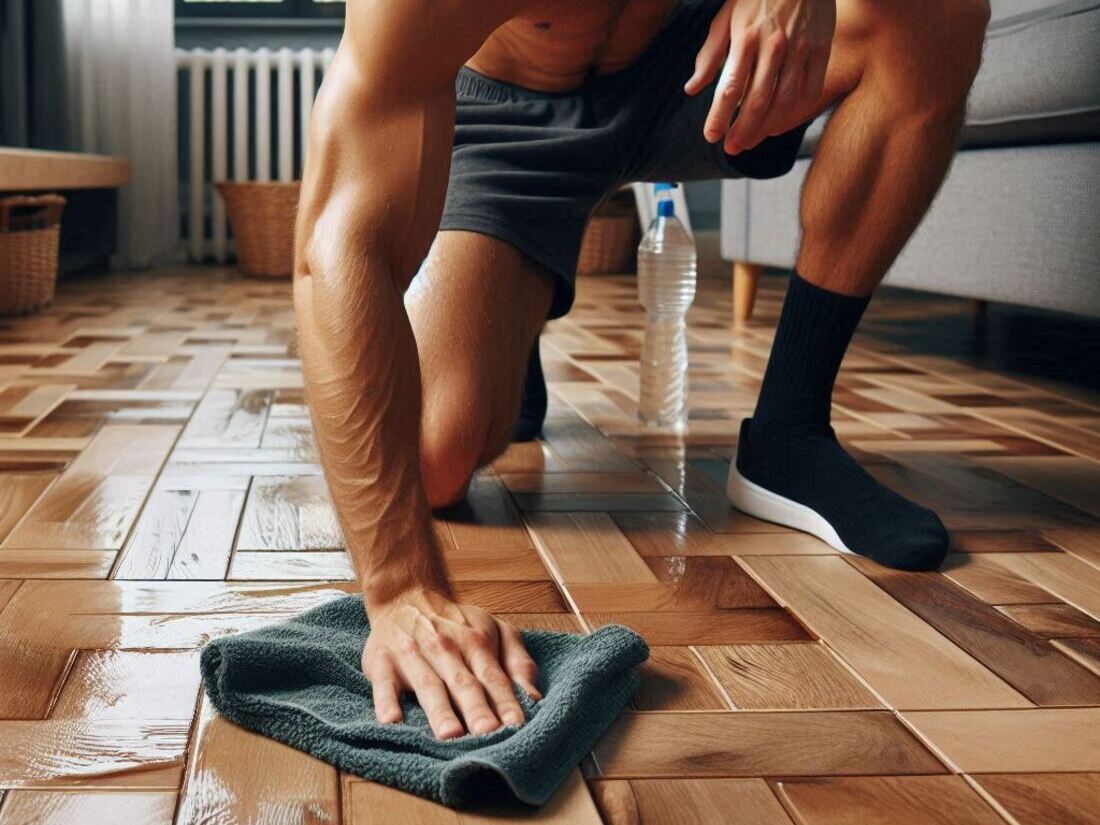
FAQs: Frequently Asked Questions About Interlocking Wood Tiles for Home Gyms
Can interlocking wood tiles handle heavy weights?
Solid wood tiles might not be the best choice for heavy weights due to potential damage. Engineered wood or wood-composite tiles can handle lighter weights, but for heavy weightlifting, rubber flooring offers superior durability.
Do interlocking wood tiles get slippery?
The level of slipperiness can vary depending on the type and finish of the tiles. Textured wood tiles or vinyl wood-look tiles with a textured surface can offer better slip resistance. Additionally, using exercise mats for specific exercises can further enhance traction.
Are interlocking wood tiles noisy?
Wood tiles offer some level of noise reduction compared to hard surfaces like concrete. However, they may not be as quiet as rubber flooring. Consider using additional soundproofing measures if noise reduction is a major concern.
How long do interlocking wood tiles typically last?
The lifespan of interlocking wood tiles depends on factors like the type of wood, usage intensity, and maintenance. Solid wood tiles can last for many years with proper care, while engineered wood or wood-composite tiles might have a shorter lifespan depending on usage. Vinyl wood-look tiles are generally less durable but can still offer a good value for low-impact workouts.
Conclusion: Interlocking Wood Tiles – A Budget-Friendly Luxury for Your Home Gym?
Interlocking wood tiles offer a compelling combination of affordability, aesthetics, and ease of installation.
They’re ideal for low-impact workouts, yoga, bodyweight exercises, and functional training.
However, for high-impact activities or heavy weightlifting, other options like rubber flooring might be a better fit due to superior durability.
Consider your workout style, budget, and desired aesthetics when making your decision. Remember, with proper care and maintenance, interlocking wood tiles can create a stylish and functional foundation for your budget-friendly home gym.
Bonus Tip
Invest in high-quality interlocking wood tiles with a secure click-lock mechanism. This will ensure a more stable and durable floor for your workouts.
Happy training (and budget-conscious decorating)!


